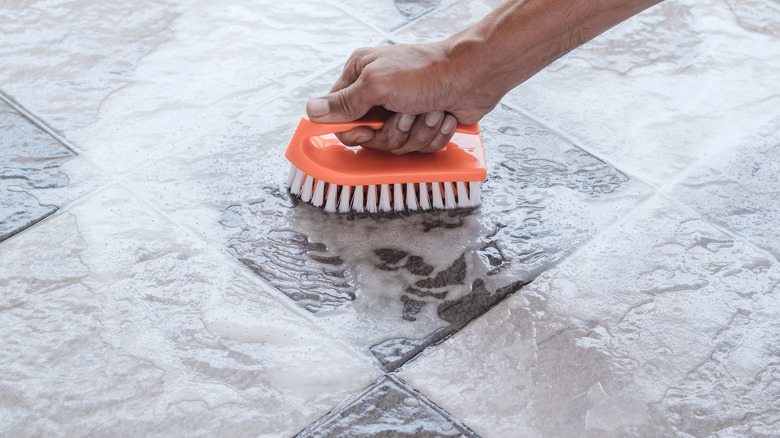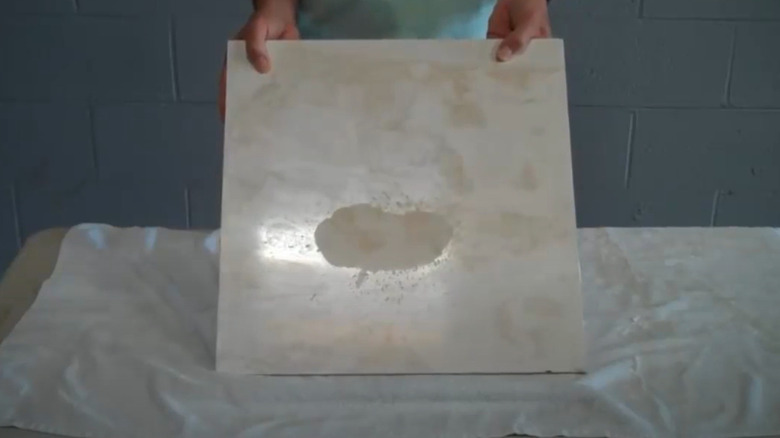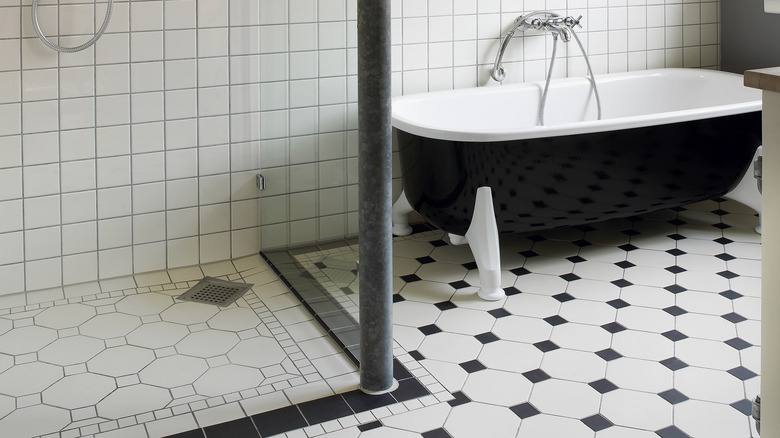What To Consider Before Using Citric Acid To Revive Grimy Tile Floors
Citric acid is a naturally occurring compound in citric fruits such as lemons and limes. It can also be synthetically made, and both versions are often added to cleaning products to help bust grime and cut through dirt. The beauty of it is that it is a relatively weak acid, clocking in at a pH level between 3 and 6. This means it's safe to use on many materials, and it's why people reach for it to revive grimy tile floors. The acid can help dissolve buildup, reducing the need for vigorous scrubbing to make the floors shine. In fact, it's great for tackling demanding tasks like removing mineral buildup and hard water stains, making it a great tool to have in your cleaning bucket. However, just because it's a weaker acid doesn't mean it can be used on everything. You need to consider its corrosive nature, which means you shouldn't use it on natural stone or porous tiles. If you do, it will ruin it.
Citric acid is a great cleaning agent because it's environmentally friendly, is all natural (if you don't use the synthetic kind), and isn't as harsh as similar products like bleach. But because it's still an acid, it has caustic properties that can be too much for natural stone. Instead, you need a neutral cleaner to wash such tiles, which is any soap or spray that has a pH of 7. Anything below that is acidic and can damage its surface. Let's take a deeper dive into why you need to consider your tile material before using citric acid to clean.
Why you can't use citric acid on natural stone tiles
Natural stone tiles are tiles made from materials that are straight from the earth and not artificially made. This includes marble, travertine, granite, slate, terrazzo, and limestone. If you have those kinds of tiles on your bathroom or foyer floor, using citric acid to revive them is a no-go. That's because these tiles are super finicky about what kind of cleaners they tolerate. You can only use neutral cleaners on them; if you use anything acidic or alkaline, you risk ruining the surface. If you use an acidic cleaner, for example, it can begin to slowly dissolve the protective sealant on the tiles and eventually create marks or etching.
But etching isn't your only problem. It can also dull the surface, leaving behind matte blemishes that will look like permanent water stains. That's because the acid interacts with the minerals in the stone, breaking them down. Once they get dissolved, what's left is a dull stain. Once that happens, you will have to hire a professional restorer to reverse the damage.
Where citric acid is safe to use
So if you can't use it on natural stone tiles, what can you use citric acid on? You can safely use it on porcelain and ceramic tiles as long as you dilute it properly. You never want to use full-strength citric acid directly on your tiles, or you run the risk of damaging the finish much in the same way as with natural stone. Experts recommend diluting 1 cup of citric acid powder with 1.5 gallons of water. If going the all-natural route, create a 1:1 ratio of lemon juice and water.
However, some cleaning companies advise against using citric acid altogether due to the chance of possible damage. Since there isn't a clear consensus, it might be best to avoid this cleaner unless you have a really tough job on your hands, such as removing limescale from your tiles. That way, you minimize the amount of exposure the tiles have to the acid, saving it only for challenging chores. This will help keep the finish intact, minimizing your risk.


